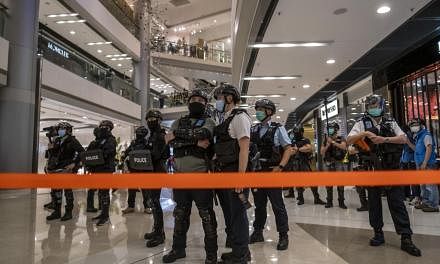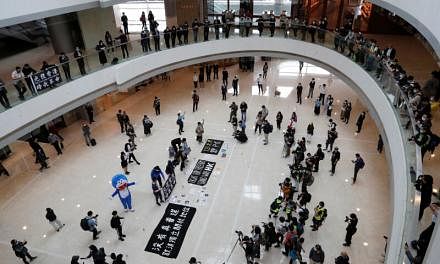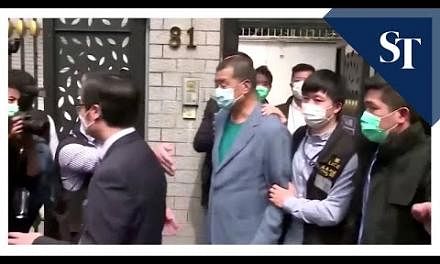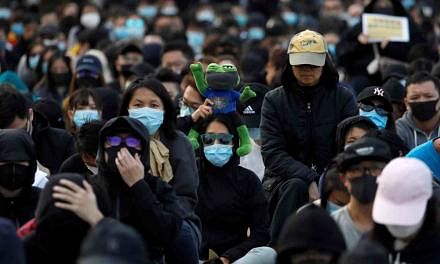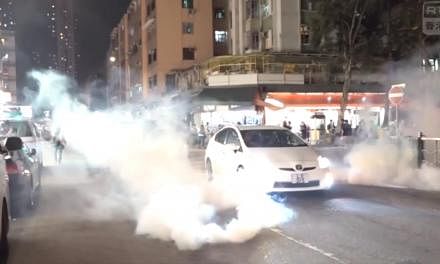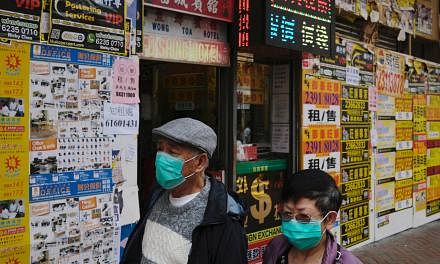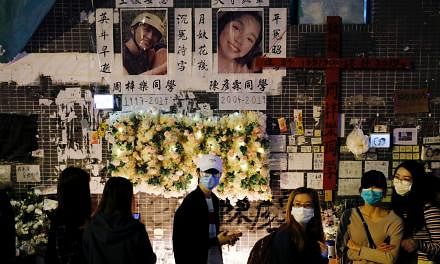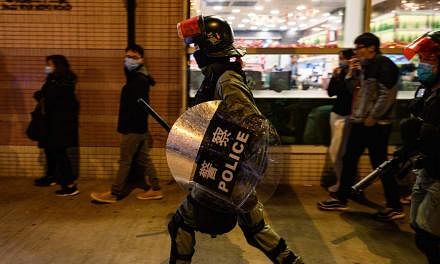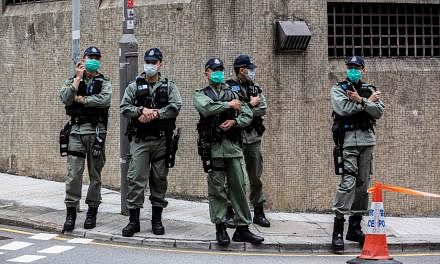A third mass rally against a contentious extradition Bill recorded a turnout of only around 550,000 on Monday, a comedown from the two million who took part in the previous rally on June 16.
Worse, it saw ugly clashes between a group of young protesters and police at the Legislative Council (LegCo) building.
July 1, which marks the city's handover from British to Chinese rule, is traditionally a day of protest.
However, the pushback against an unpopular extradition Bill has morphed into a movement resisting all forms of authority, whether it is the Hong Kong government or the central government in Beijing, seen to be increasingly encroaching into the territory's affairs.
While anger at the government and particularly Chief Executive Carrie Lam remains unabated, rally turnouts have been shrinking, because of a combination of protest fatigue and the civil disobedience displayed by some quarters.
Analysts also said that some have accepted the concessions made by the administration, with Mrs Lam having apologised twice and promising to shelve the Bill.
Pre-dawn scenes on Monday showed black-clad protesters clashing with police in the Wanchai area, where protesters had gathered in a bid to disrupt the annual flag-raising ceremony to mark the hand-over. They were eventually dispersed by riot police armed with batons and pepper spray, but regrouped less than a kilometre away at the LegCo.
They broke into the building past 9pm, spending the next two hours wrecking the interiors before clearing out as police warned of further action.
But the consequences of their actions had been felt much earlier in the day. The annual mass rally was set to end at Tamar Park next to the LegCo, but had to be rerouted because of the chaos.
And while hundreds of thousands still showed up for the rally, their numbers were a far cry from those on June 9 and 16.
Financial planner Calvin Yam, 34, said he decided to stay home with his wife and young children after seeing images of police pepper-spraying protesters in the morning.
Rally organisers called for calm and Hong Kongers' understanding, saying they understood why young protesters reacted in that manner.
"We can have different views on different ways of action, but we kindly ask everyone not to point blame and not to be abrasive," the Civil Human Rights Front said in a statement yesterday.
Many of the younger protesters were inspired and educated by the 2014 Occupy Movement. However, the current one does not have a clear leader, both by design and out of necessity. With many of the previous movement's leaders in jail, protests over the extradition Bill have been organised through online forum LIHKG - a local version of Reddit - and communication apps like Telegram.
While the group has been more idealistic, calling for changes like universal suffrage and pressing for the complete scrapping of the Bill, the hive-mind mentality has its advantages, said political analyst Ivan Choy, who is a senior lecturer at the Chinese University of Hong Kong.
"They all voted online before deciding to occupy the legislature, and they even managed to decide when to retreat together, all through communicating on social media," he said.
Adopting gongfu legend Bruce Lee's quote "be water, my friend", the movement has been just that - swift and fluid, moving and adapting quickly.
On June 21, after the government failed to respond to their list of demands, protesters surrounded the legislature and government offices in Admiralty, and barricaded police headquarters in Wanchai. They also occupied major roads across the city centre, using makeshift barriers fashioned from metal fences and crash barriers. Working quickly, several thousand protesters brought traffic to a complete standstill within 45 minutes.
This came to the fore on Monday when they worked with near military precision: Those in the front line took turns to bash at the glass, pepper-pray victims were immediately evacuated to be attended to by medics, and volunteers gave out masks, helmets and goggles.
Much of their anger stems from what they see as an erosion over the past few years of freedoms they perceive as not experienced in most of mainland China, said University of California, Irvine, professor of history Jeffrey Wasserstrom.
This includes the outlawing of a pro-independence party last year.
"It can often be hard to tell with any specific move, if it is done at Beijing's directive or by a... Chief Executive trying to stay in the good graces of the Communist Party," Professor Wasserstrom said.
"There is a widespread sense among protesters, though, that the combination of those two phenomena adds up to a very serious threat to the high degree of autonomy... (they) were promised."
Under the "one country, two systems" framework, Beijing has promised Hong Kong a "high degree of autonomy for at least 50 years, which would run out in 2047".
"There is a sense that without pushing back, the process of the difference between Hong Kong and mainland cities, when it comes to the rule of law and the space for civil society to operate, will keep diminishing - and quickly," he added.

